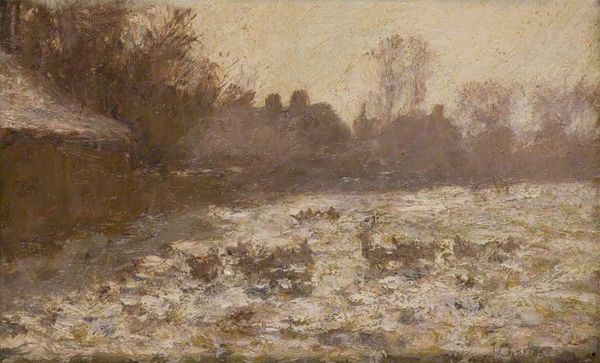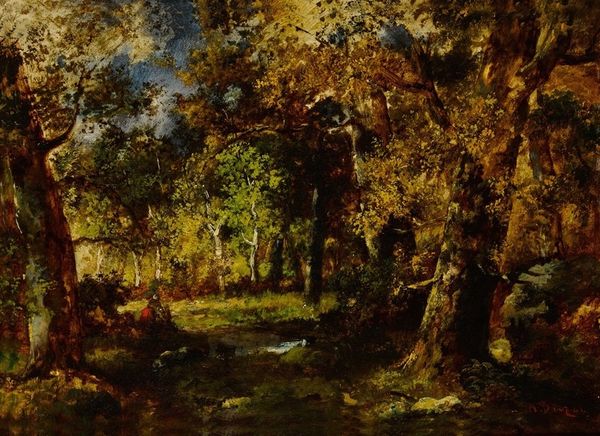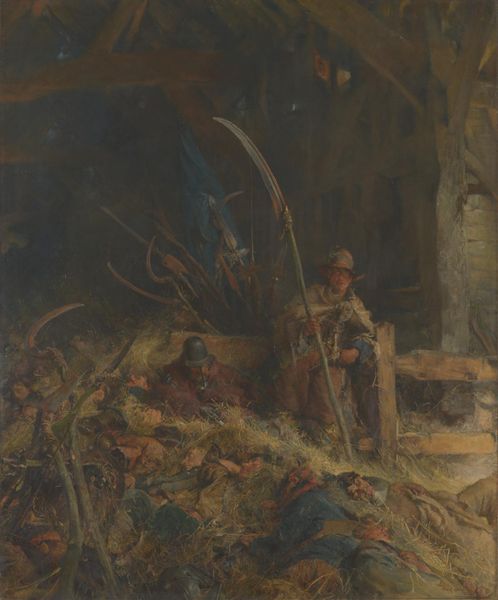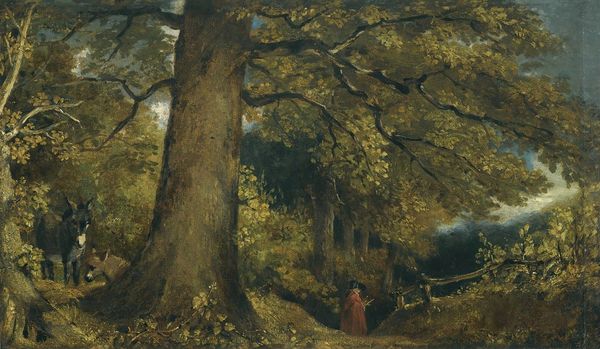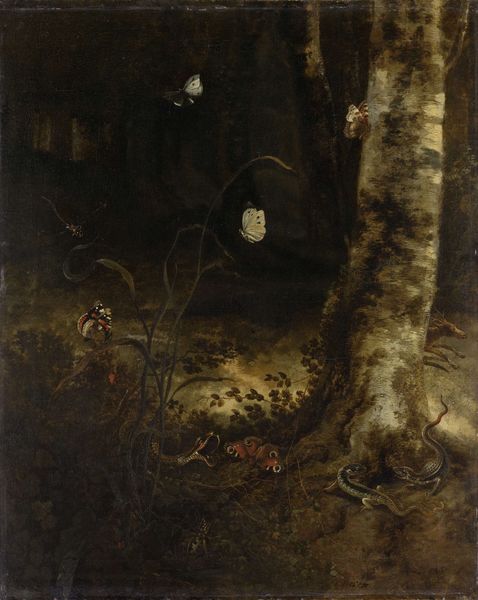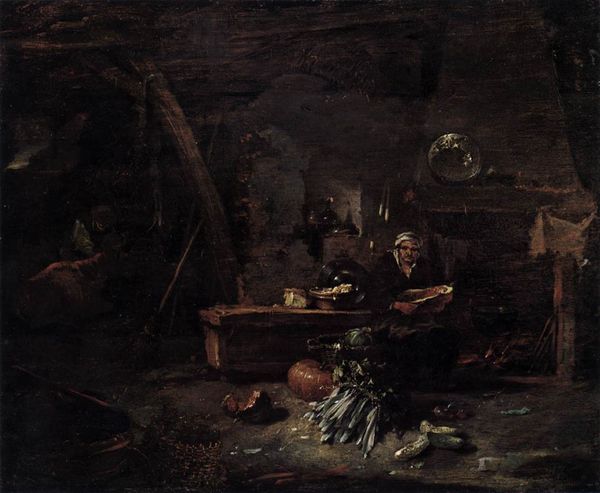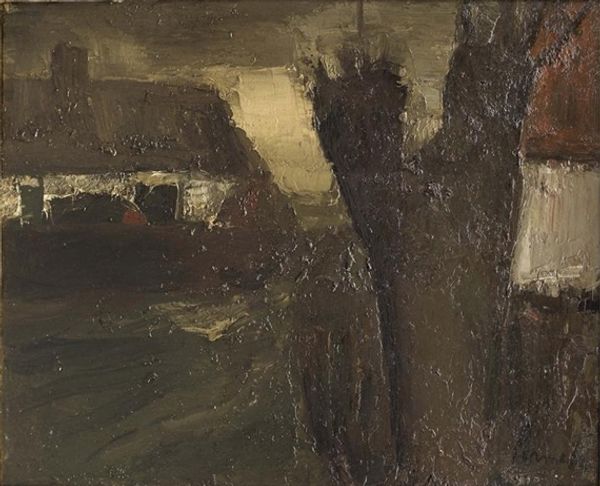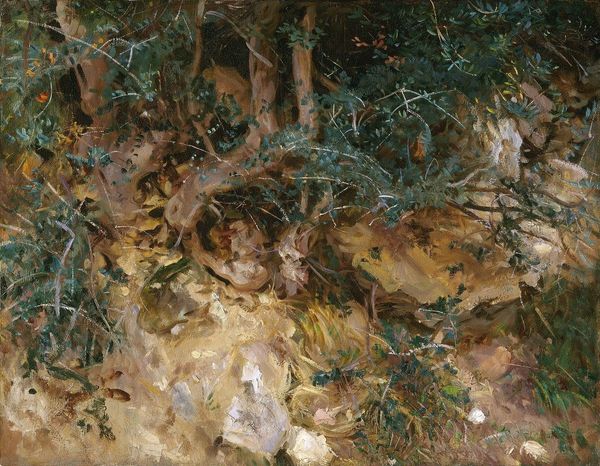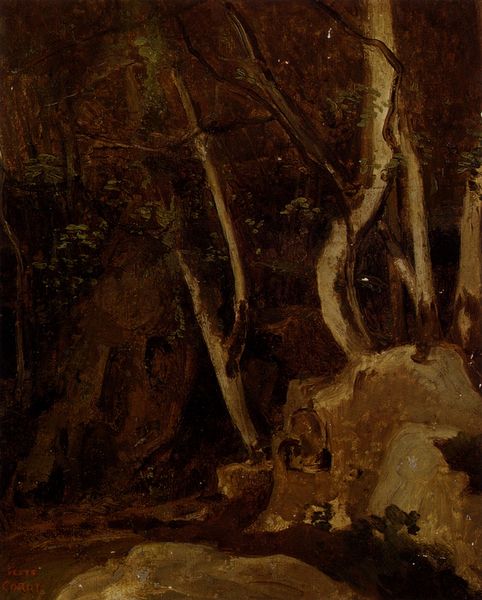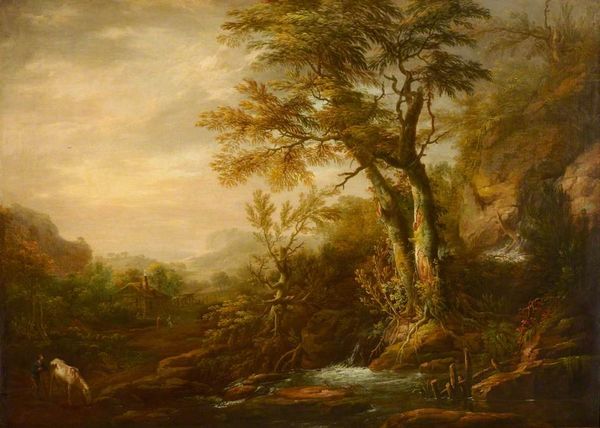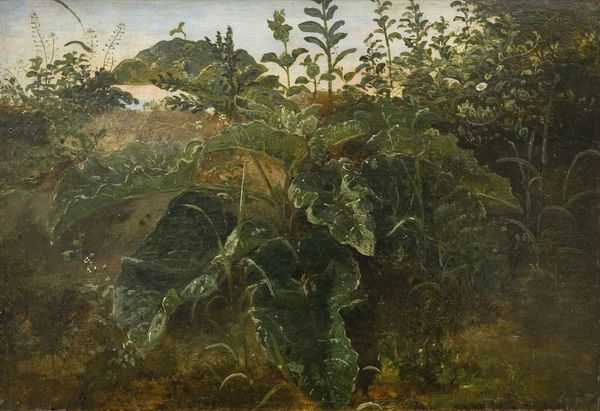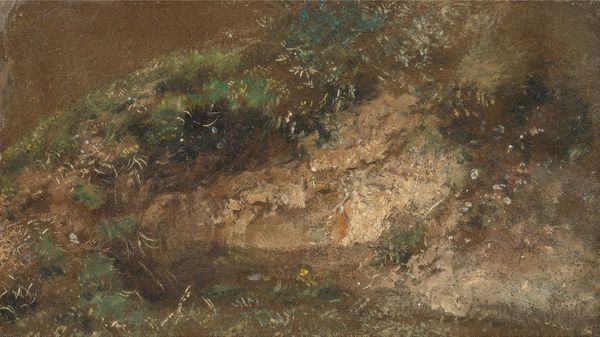
painting, oil-paint
#
tree
#
painting
#
oil-paint
#
landscape
#
leaf
#
figuration
#
oil painting
#
romanticism
#
pre-raphaelites
#
nature
#
realism
Copyright: Public domain
John Crome's painting "Dock Leaves" presents a scene dominated by earth tones and textured surfaces. The immediate visual impact is the contrast between the broad, almost sculptural, leaves in the foreground and the more indistinct, vertical rhythms of the wooden structure behind. Crome was adept at using visible brushstrokes to create an almost tactile experience. Notice how the leaves are defined not only by their shape but by the direction and density of the paint application. This textural interplay can be seen as an early form of material investigation which was to influence later movements, such as Impressionism, where the handling of paint became as important as the subject matter itself. The composition of the work, with its focus on the foreground elements, challenges traditional landscape painting by denying a panoramic vista. It's a study in form and texture, inviting us to consider how surface and structure work together to generate meaning. Through this focus on materiality, Crome asks us to reconsider our relationship to the natural world, seeing beauty not in grand vistas but in the intimate details of everyday life.
Comments
No comments
Be the first to comment and join the conversation on the ultimate creative platform.

